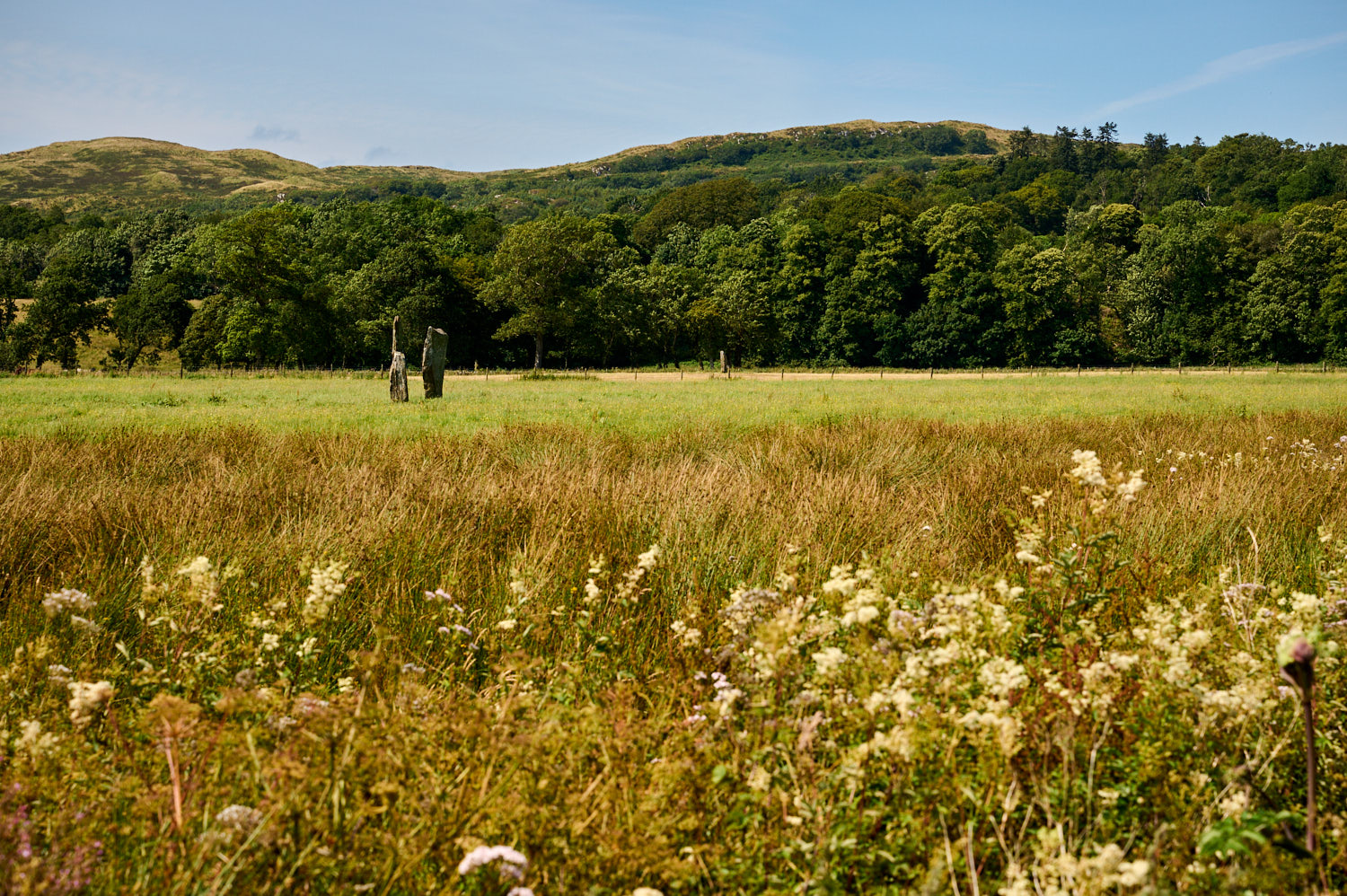
The standing stones in Nether Largie were my next stop in the Kilmartin Glen. Five large standing stones form a X.
There are many theories as to why the stones were put there, and in this form, it might have been a lunar observatory, which marks where the moon will rise and set at certain points in its cycle. But there are also some solar alignments.
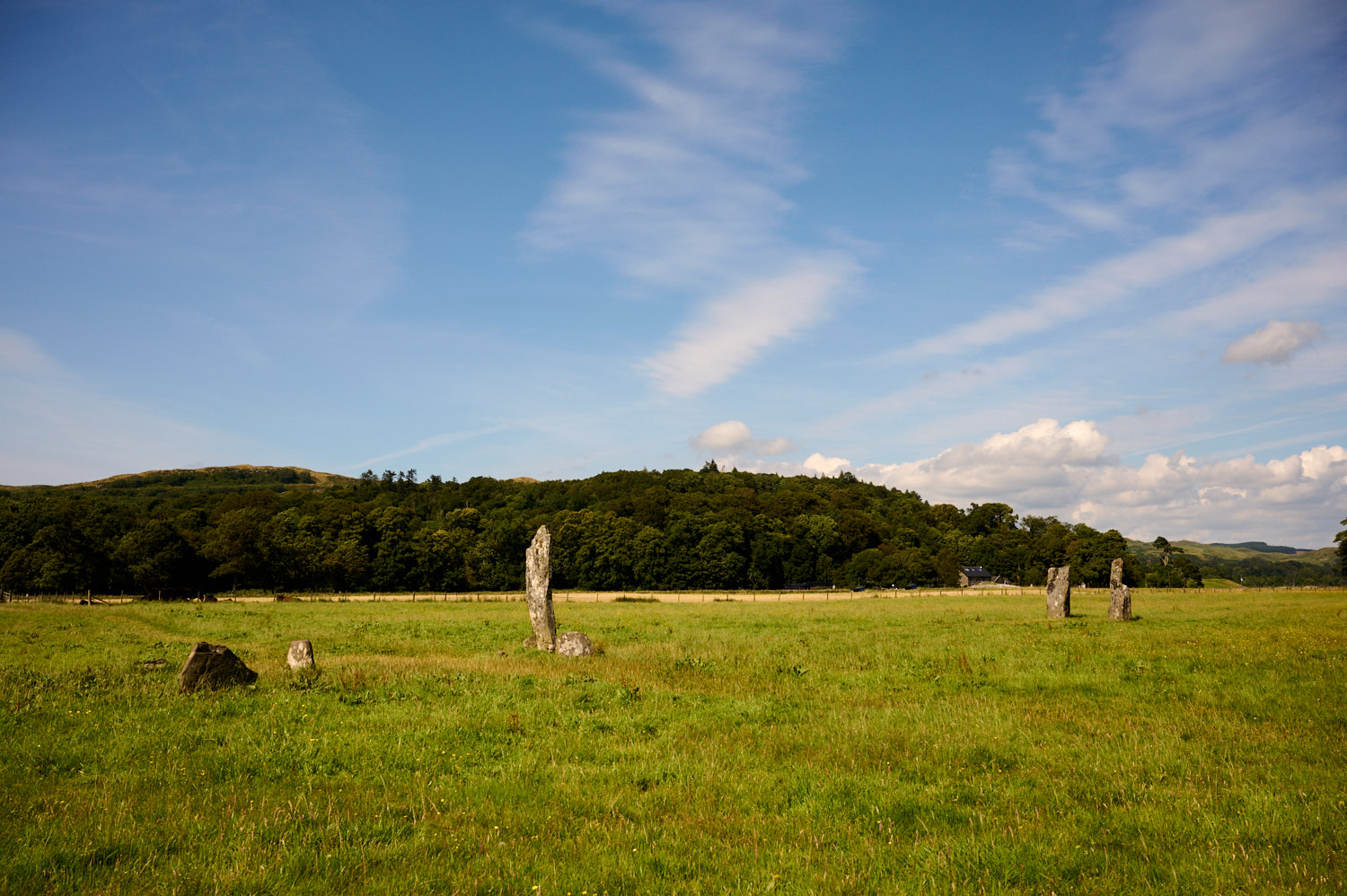
The lunar observatory, if that is what it is, was built about 3,200 years ago. The interesting thing about this date is that cup and ring carvings are thought to date back to a period 1,500 years earlier still. (Undiscovered Scotland)
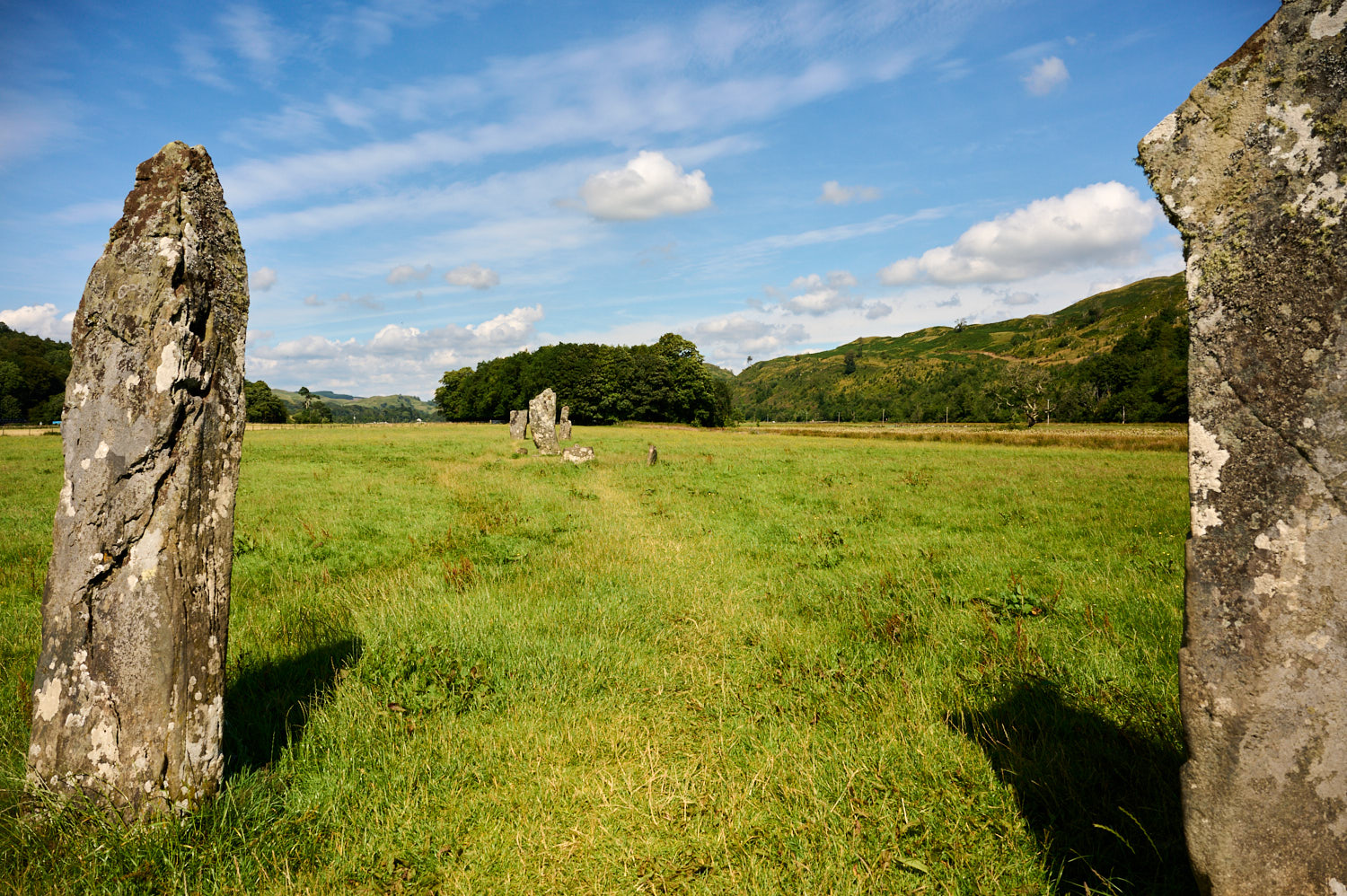
Even when we don´t know why these stones were put there, quite a few superstitions surround them. Camping nearby will bring good luck, but touching them might bring bad luck. (I hope I didn´t touch them!)
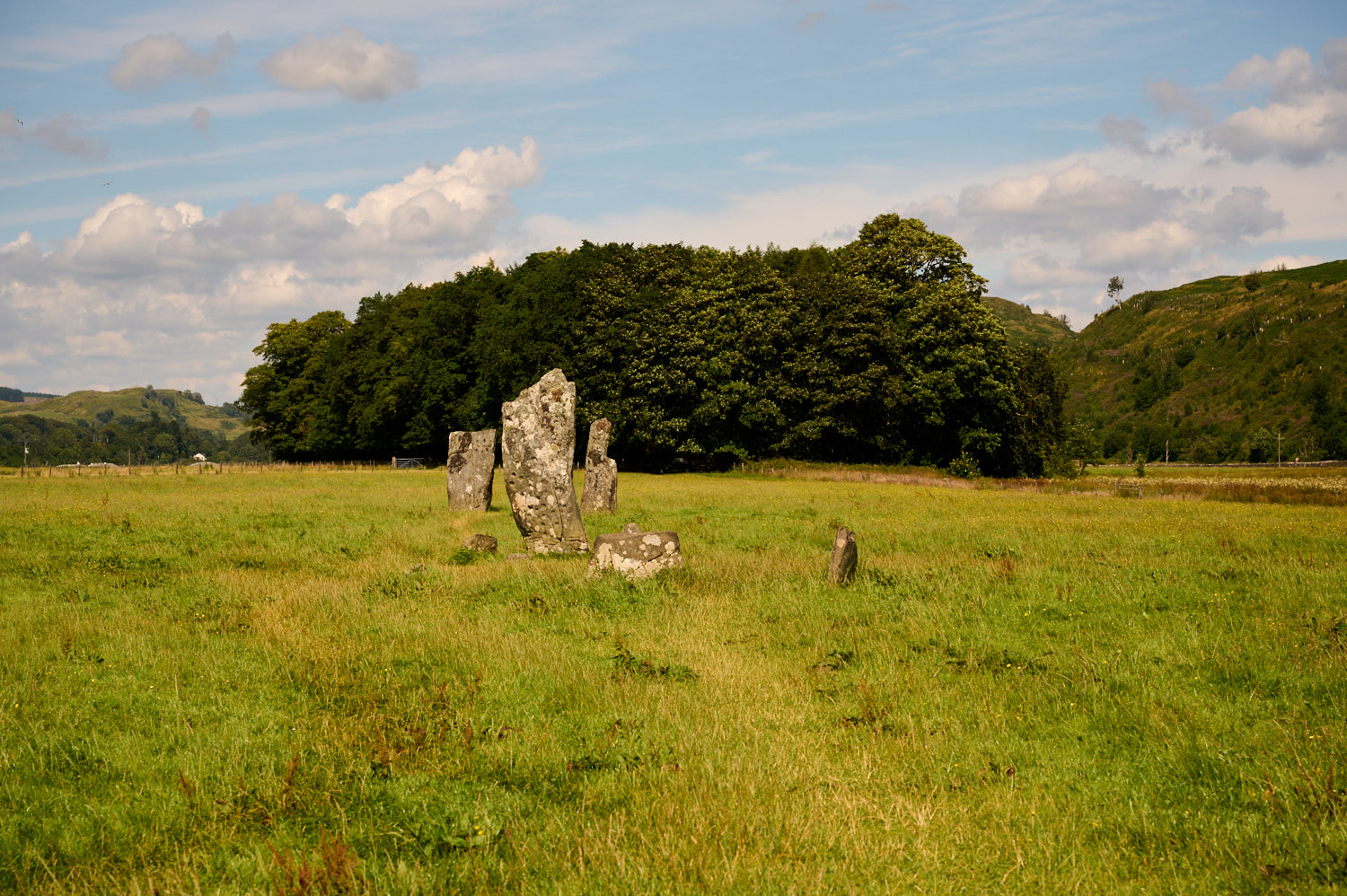
The Nether Largie Standing Stones remains to be one of the greatest mysteries of Kilmartin Glen. What can be interpreted, however, is that these archaeological features were of great importance to the inhabitants of the Bronze Age, even if the reasons behind their placement are kept a fascinating secret. (Hidden Sotland)
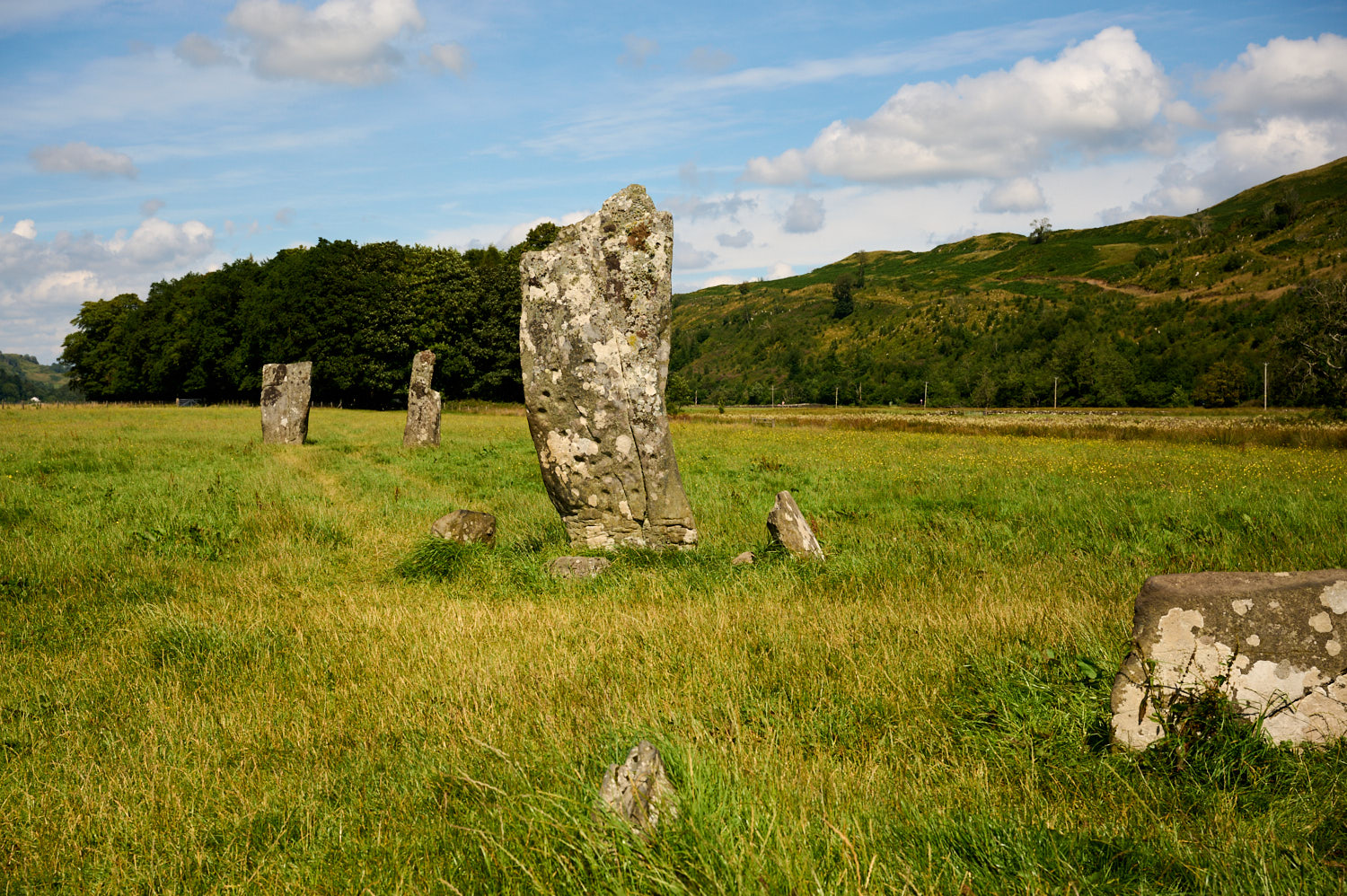
Temple Wood Stone Circle
Just a short walk from the standing stones, Temple Wood has two stone circles.
The earliest remains on the site indicate it was first used in about 3500–3000 BC, when a timber circle was built. Work began on a stone circle to replace the timber one, but was never finished.
In about 3000 BC an oval setting of 22 standing stones was built south-west of the timber circle. None is taller than 1.6m, and one is marked with a spiral motif –paralleled in Irish passage-grave art – which strongly suggests contact between Kilmartin and Ireland. (Historic Enviroment Scotland)
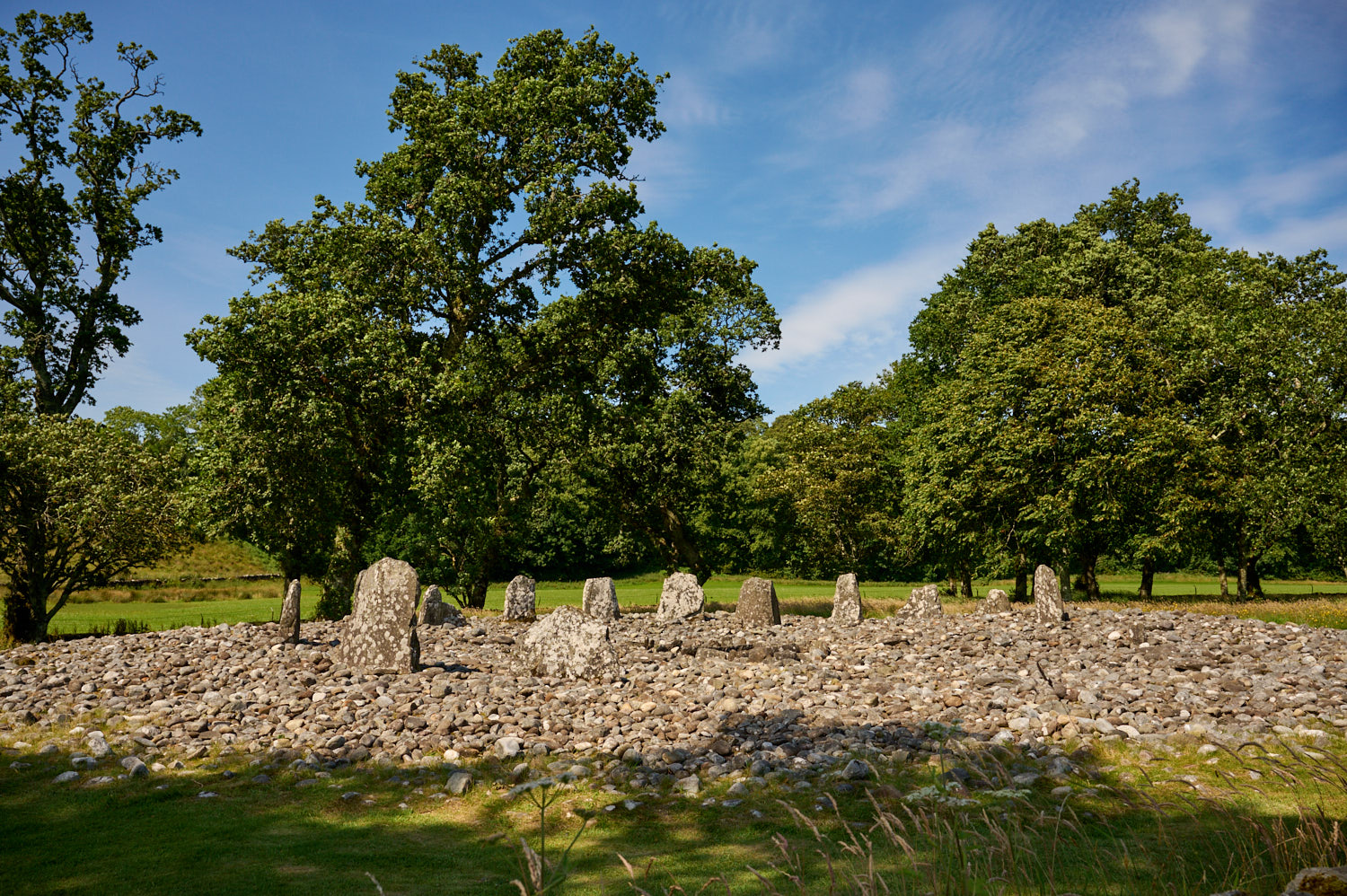
In about 2000 BC two small burial cairns outside the stone circle were constructed.
Sir John Malcolm, a landowner, was so fascinated by the circles that he planted trees around them at the end of the 1800s, which he named Temple Wood.
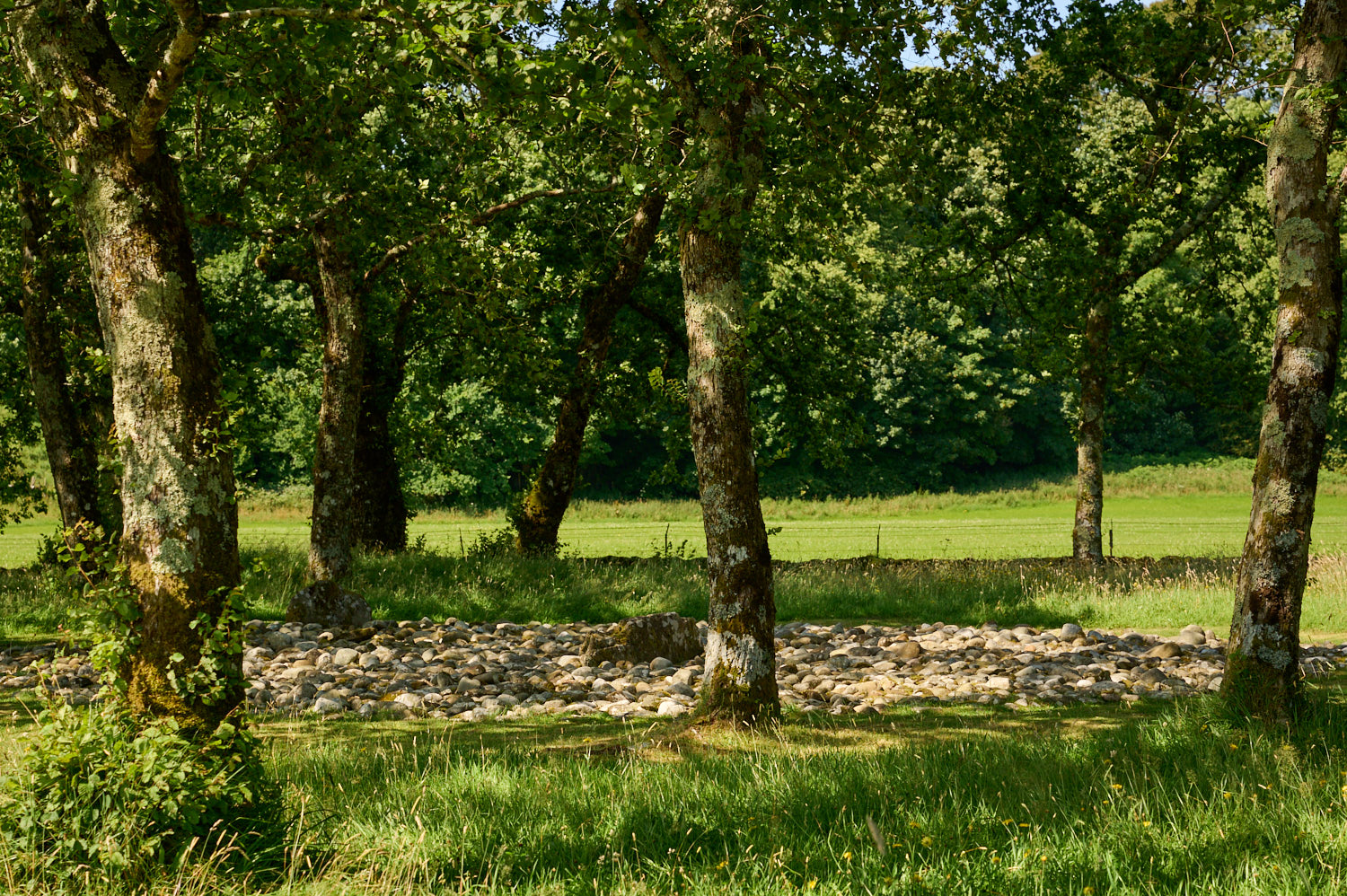
Leave a Reply